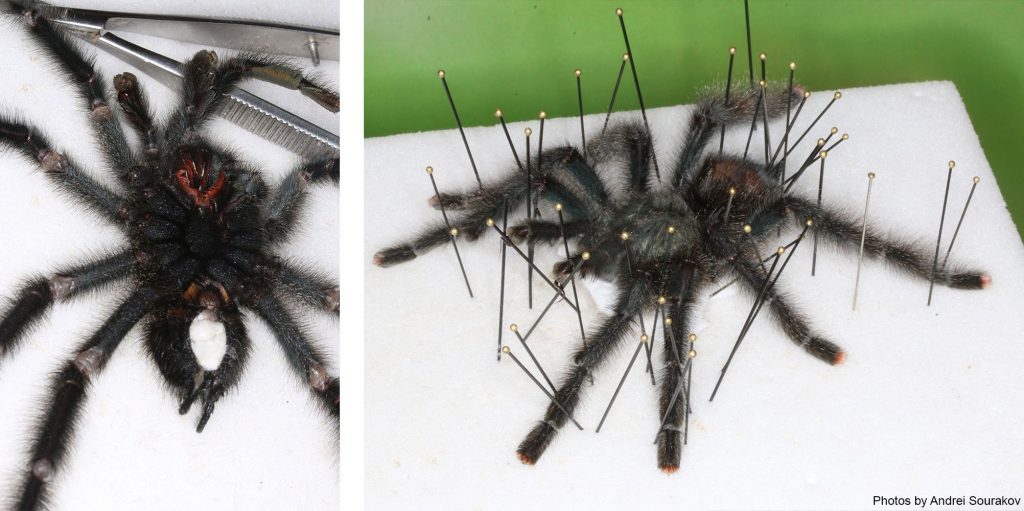One of the perks of working at a natural history museum is not knowing what the day will bring. Once, in the not-too-distant past, I got a call from our front desk:
– “A man has brought a deceased, frozen pet tarantula and is looking for help on getting it taxidermized for sentimental reasons. Would you help?”
I have preserved Lepidoptera specimens for many years, of course, and even their caterpillars, but I had never dealt with a tarantula before. I decided to give it a try: service to the public and all that…
Here’s my recipe:
1. Defrost the tarantula that was previously frozen by the owner.
2. Make a small incision through the ventral side of the abdomen and remove all the contents. Note: You will discover that it is liquid.
3. Make small cotton balls and stuff the abdomen with cotton until fully inflated to the original size.
4. Find a photo of a living tarantula on the Internet as your model.
5. Using entomological pins, arrange the tarantula on a foam board so that it looks natural.
6. Place in the drying oven for 2 weeks, or until fully dry: probe with forceps, to make sure legs can no longer be moved.
7. Place in a shadow box frame and immobilize with a couple of pins.
8. Step back and enjoy.

The title of this post capitalizes on the viral internet meme @FloridaMan (https://en.wikipedia.org/wiki/Florida_Man)

